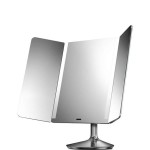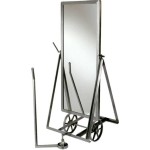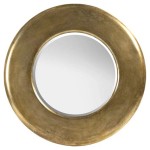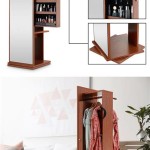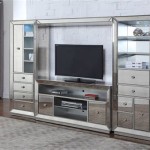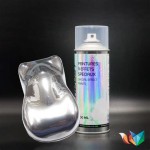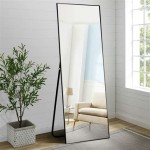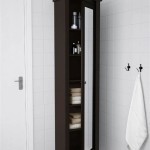Creating a Full Wall Mirror in SketchUp: A Comprehensive Guide
SketchUp is a versatile 3D modeling program widely used by architects, interior designers, and hobbyists. One common design element often incorporated into SketchUp models is a full wall mirror. Properly representing a full wall mirror adds a sense of depth and realism to any interior visualization. This article provides a detailed, step-by-step guide on how to effectively create a full wall mirror in SketchUp, covering essential techniques and considerations for achieving a visually convincing result.
This process involves several key stages, from accurately measuring the space and defining the mirror dimensions to applying the appropriate material properties and strategically positioning the virtual camera for optimal reflection viewing. Furthermore, understanding how SketchUp handles reflections and shadows is crucial for generating a realistic depiction of a full wall mirror. By following these guidelines, users can successfully integrate this impactful design element into their SketchUp models, enhancing the overall visual quality and realism of their projects.
1. Defining the Mirror's Dimensions and Placement
The initial step involves accurately determining the dimensions of the wall that will house the mirror. This requires precise measurements of the wall's height and width within the SketchUp model. Utilize the Tape Measure tool to measure the wall's boundaries. Record these measurements carefully, as they will be used to create the mirror's surface. Accuracy is paramount, as any discrepancies in dimensions will affect the realism of the final visual representation.
Next, create a rectangle on the wall surface that corresponds to the intended size of the mirror. The Rectangle tool is the appropriate tool for this task. Input the measured dimensions of the mirror into the tool to ensure accuracy. Consider the placement of the mirror within the wall; is it centered, or offset to one side? Reflect this precisely within the SketchUp model.
Once the rectangle is drawn, use the Push/Pull tool to give the mirror a slight thickness. Even though mirrors are inherently thin, adding a minimal thickness (e.g., 1/8 inch or 3mm) can help with material application and render visibility. Avoid making the thickness excessive, as this will detract from the realistic appearance of the mirror.
It is important to group the newly created mirror geometry for easier management and manipulation. Select the entire mirror object (the rectangle and its thickness), right-click, and choose "Make Group." This allows moving, editing, and applying materials to the mirror without affecting the surrounding wall geometry.
2. Applying Mirror Material Properties
The key to creating a realistic mirror in SketchUp lies in the application of appropriate material properties. While SketchUp's default material library does not contain a dedicated "mirror" material, one can be created or modified to simulate the reflective properties of a mirror surface.
Open the Materials window in SketchUp. Create a new material by clicking on the "Create Material" button (usually a small plus icon). Name the new material something descriptive, such as "Wall Mirror" or "Mirror Surface."
Within the Material Editor, adjust the color properties of the new material. Select a light gray or near-white color as the base color. This simulates the reflective nature of the mirror. The exact color can be adjusted based on the desired degree of reflectivity.
Crucially, adjust the "Opacity" or "Transparency" slider. While a mirror is not truly transparent, reducing the opacity slightly (e.g., to 95% or 98%) can enhance the realism of reflections, especially when using rendering plugins. Experiment with different opacity values to achieve the desired effect.
If using a rendering plugin like V-Ray, Enscape, or Lumion, additional material properties can be adjusted to further enhance the mirror's realism. These properties might include: Reflection Amount, Glossiness (to control the sharpness of reflections), and Fresnel reflections (to simulate the changing reflectivity based on viewing angle). Consult the documentation for your specific rendering plugin for details on these settings.
Once the material properties are configured, apply the "Wall Mirror" material to the front face of the mirror object’s group. Select the Paint Bucket tool, choose the newly created material, and click on the front face of the mirror.
3. Optimizing the Scene for Realistic Reflections
Achieving a truly convincing full wall mirror requires careful consideration of the surrounding scene and the way SketchUp handles reflections. Factors such as lighting, surrounding objects, and camera placement significantly impact the perceived realism of the mirror.
Ensure there are objects within the scene that the mirror can reflect. A bare room with only the wall behind the camera will not produce a realistic reflection. Add furniture, decorations, and architectural details to populate the scene and provide something for the mirror to reflect. The more detail in the scene, the more convincing the reflection will appear.
Pay close attention to lighting. Natural light from windows or artificial light from lamps will be reflected in the mirror. Experiment with different lighting scenarios to achieve the desired mood and realism. If using a rendering plugin, utilize its lighting features to create realistic lighting effects and shadows.
The placement of the camera is critical for viewing the mirror and its reflections. Position the camera so that it captures the reflections of surrounding objects. Experiment with different camera angles and viewpoints to find the most visually appealing and realistic composition. Consider using SketchUp's "Two-Point Perspective" camera setting to avoid distortion in the perspective view.
SketchUp's built-in rendering capabilities are limited in terms of reflection quality. To achieve truly realistic reflections, consider using a rendering plugin. These plugins utilize advanced rendering algorithms to simulate complex light interactions and produce photorealistic images. Rendering plugins offer greater control over reflection properties, allowing for more accurate and believable mirror representations. V-Ray, Enscape, Lumion, and Thea Render are examples of popular rendering plugins for SketchUp.
If using a rendering plugin, enable reflection features within the plugin's settings. This will instruct the plugin to calculate and render reflections on surfaces with reflective materials. Adjust the reflection quality settings within the plugin to balance rendering speed and image quality. Higher reflection quality settings will produce more accurate and detailed reflections but will also increase rendering time.
Even with a rendering plugin, performance considerations are important. Extremely complex scenes with numerous reflective surfaces can significantly increase rendering times. Optimize the scene by simplifying geometry where possible and using lower-resolution textures for objects that are far from the camera. This will help to reduce rendering times without sacrificing too much visual quality.
Finally, after rendering, post-processing techniques can further enhance the realism of the mirror. Image editing software such as Photoshop or GIMP can be used to adjust the colors, contrast, and sharpness of the rendered image. Small adjustments to these parameters can make a significant difference in the overall visual impact of the mirror.
By meticulously considering the dimensions, materials, surrounding environment, and rendering techniques, users can create a highly realistic full wall mirror within their SketchUp models. This attention to detail adds significant value to interior designs and visualizations, enhancing the overall visual appeal and realism of the project.
Mirror 3d Warehouse
Mirror 3d Warehouse
Wall Mirror And Lights 3d Warehouse
Pottery Barn Logan Wall Mirror 3d Warehouse
86367 Wall Mirror Daisy 165x55cm 3d Warehouse
Mirror 3d Warehouse
Wall Mirror Decor 3d Warehouse

Sketchup For Interior Design Mirrors And Reflections In
Oval Wall Mirror 3d Warehouse

Glass Mirror Mosaic Tile Sketchup How To Model It

